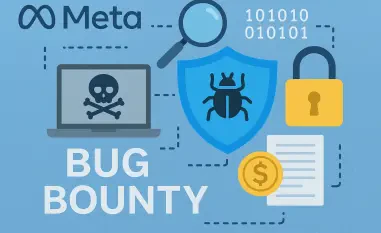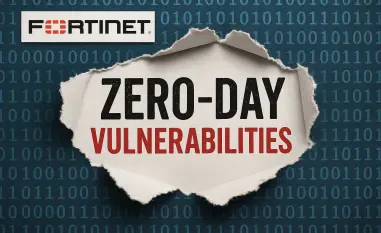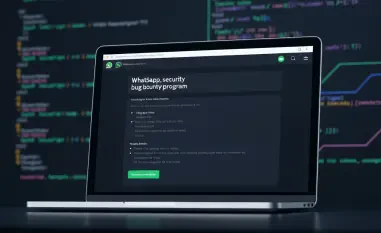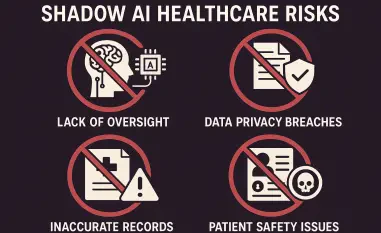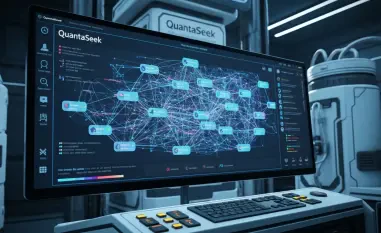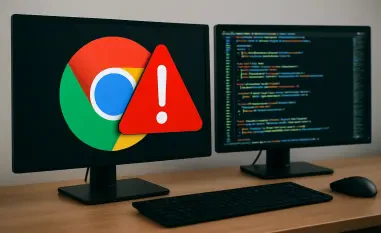Introduction
Imagine a digital catastrophe so vast that over 140,000 tenants of a major cloud provider find their data exposed, with more than 6 million records laid bare to attackers who lurked undetected for months, shaking the cybersecurity world to its core. This is the reality of the Oracle Cloud breach that occurred this year, marking it as one of the largest supply chain attacks against a cloud giant. The incident has sparked intense debate about the adequacy of current security measures and whether a proactive approach could have averted such a disaster. This FAQ article aims to address critical questions surrounding the breach, exploring if Continuous Threat Exposure Management (CTEM), a framework championed by industry leaders, could have made a difference. Readers will gain insights into the root causes of the incident, the principles of CTEM, and actionable lessons for bolstering cybersecurity defenses in an era of relentless threats.
The significance of this topic cannot be overstated, as cloud services underpin countless businesses and critical infrastructure globally. With attackers increasingly exploiting overlooked vulnerabilities, understanding how to shift from reactive to proactive security is paramount. This article will break down complex issues into clear, digestible answers, providing a roadmap for organizations seeking to protect their digital assets from similar fates.
Key Questions
What Was the Oracle Cloud Breach and Why Did It Happen?
The Oracle Cloud breach of this year stands as a stark reminder of the vulnerabilities inherent in even the most robust cloud environments. This massive incident compromised over 140,000 tenants and exposed millions of sensitive records, stemming from a flaw in a legacy Oracle Access Manager (OAM) server. The root cause was traced to a known vulnerability, CVE-2021-35587, which allowed attackers to bypass access controls and gain unauthorized entry, remaining undetected for an extended period.
Delving deeper, the breach was exacerbated by systemic issues such as inadequate monitoring of legacy systems and a reliance on reactive security practices. The unmonitored OAM server, possibly overlooked for years despite publicly available exploit details, became an entry point for attackers to pivot to critical identity infrastructure. This incident highlights a broader challenge in cybersecurity: the failure to identify and address exposures in shadow IT or outdated components before they are exploited.
The insight here is that traditional security approaches, which often depend on periodic scans of known assets, fall short in dynamic, sprawling cloud ecosystems. A lack of visibility into all components of the attack surface left Oracle vulnerable, demonstrating that without continuous oversight, even well-resourced organizations can suffer catastrophic breaches. This case underscores the urgent need for strategies that anticipate threats rather than merely respond to them.
What Is Continuous Threat Exposure Management (CTEM) and How Does It Work?
Continuous Threat Exposure Management, or CTEM, is a proactive cybersecurity framework designed to identify, assess, and remediate exposures across an organization’s entire attack surface on an ongoing basis. Endorsed by industry experts like Gartner, CTEM shifts the focus from reacting to incidents after they occur to preventing them through constant vigilance. It addresses the limitations of traditional vulnerability management by ensuring no part of the digital environment—whether legacy systems or cloud assets—is left unmonitored.
At its core, CTEM operates through a cycle of discovery, prioritization, and remediation, tailored to the specific risks and business impacts of an organization. Discovery involves mapping all assets and potential exposures, including those in shadow IT, while prioritization focuses on vulnerabilities that pose the greatest threat to critical systems, often referred to as “crown jewel” assets. Remediation then ensures swift action to mitigate risks, guided by metrics like Mean Time to Detect (MTTD) and Mean Time to Remediate (MTTR).
The strength of CTEM lies in its emphasis on speed and adaptability, ensuring that threats are addressed before they escalate into full-blown breaches. By integrating continuous monitoring with business context, this framework helps organizations allocate resources effectively, protecting what matters most. For instance, in a cloud-heavy environment, CTEM would prioritize identity systems like Single Sign-On (SSO) to prevent lateral movement by attackers, a key factor in amplifying damage during incidents.
Could CTEM Have Prevented the Oracle Cloud Breach?
Examining the specifics of the Oracle Cloud breach, it becomes evident that CTEM could have played a pivotal role in mitigating or even preventing the incident. The breach originated from a vulnerable OAM server that went undetected, likely due to gaps in asset visibility. A CTEM approach, with its focus on continuous discovery, would have identified this legacy system as a potential exposure long before attackers exploited it, using tools like standard vulnerability scanners to flag known issues.
Beyond discovery, CTEM’s prioritization mechanism would have flagged the OAM server’s connection to critical identity infrastructure as a high-risk area requiring immediate attention. By classifying such systems as essential assets, additional safeguards like network segmentation and enhanced monitoring could have been deployed to block attackers from moving laterally to sensitive areas like SSO or LDAP systems, significantly reducing the breach’s impact.
Moreover, CTEM’s emphasis on rapid remediation and transparent communication could have curtailed the attackers’ window of opportunity. With metrics driving faster detection and response, the months-long undetected access enjoyed by the perpetrators might have been cut short. Clear internal and external communication, a core tenet of CTEM, could also have minimized confusion and reputational damage by ensuring stakeholders were informed promptly and accurately about the scope of the issue.
Why Are Legacy Systems and Shadow IT Such Significant Risks?
Legacy systems and shadow IT represent persistent blind spots in many organizations’ security postures, as vividly illustrated by the Oracle Cloud breach. These outdated or unmonitored components, often forgotten in the rush to adopt new technologies, provide fertile ground for attackers seeking entry points. In Oracle’s case, the vulnerable OAM server epitomized this risk, remaining outside the scope of regular security checks despite its critical role in access management.
The challenge with such systems lies in their invisibility to traditional security tools, which typically focus on known, actively managed assets. Shadow IT—applications or infrastructure deployed without formal oversight—compounds this problem by introducing unknown variables into the attack surface. Without a comprehensive inventory, organizations cannot protect what they do not see, leaving gaps that sophisticated attackers are quick to exploit.
CTEM offers a solution by mandating continuous discovery across all environments, ensuring that even obscure or legacy elements are accounted for in security planning. This proactive stance contrasts with reactive models that address issues only after a breach occurs. By shining a light on hidden risks, organizations can patch vulnerabilities or decommission outdated systems before they become liabilities, a step that could have altered the outcome for Oracle.
How Does Prioritization of Vulnerabilities Impact Breach Outcomes?
Prioritizing vulnerabilities based on business impact is a cornerstone of effective cybersecurity, and its absence can drastically worsen breach outcomes, as seen in the Oracle incident. Attackers exploited the initial OAM server flaw to access high-value identity systems, amplifying the damage through lateral movement. Had these systems been identified as critical assets deserving heightened protection, the breach’s severity might have been contained.
CTEM addresses this by aligning security efforts with the organization’s most valuable components, ensuring resources are directed where they are needed most. For example, identity infrastructure, often a gateway to broader access, would receive priority for monitoring and segmentation under a CTEM framework. This targeted approach prevents attackers from escalating privileges or extracting sensitive data, limiting the overall fallout.
Supporting this perspective, industry surveys highlight the prevalence of such risks, with many businesses reporting cyber incidents tied to unprotected critical assets. By focusing on what truly matters—rather than treating all vulnerabilities equally—organizations can avoid being overwhelmed by the sheer volume of potential threats. This strategic focus could have served as a bulwark against the cascading effects observed in the Oracle breach, demonstrating the practical value of prioritization.
Why Is Speed of Detection and Remediation So Critical?
Speed in detecting and remediating threats often determines whether an incident remains a minor issue or balloons into a major crisis, a lesson painfully evident in the Oracle Cloud breach. Attackers maintained access for months, extracting data and issuing extortion demands, largely because initial detection was delayed. This prolonged exposure underscores how critical response times are in limiting damage.
CTEM places significant emphasis on reducing both MTTD and MTTR, pushing organizations to identify exposures and act swiftly to neutralize them. This focus on agility ensures that even if a vulnerability is exploited, the window for attackers to operate is minimized. Tools and processes under CTEM are designed to provide real-time alerts and streamlined workflows, enabling rapid containment of threats before they spiral out of control.
In contrast, a slow response, as witnessed in this year’s breach, allows adversaries to deepen their foothold, often leading to irreparable harm. Industry data reinforces this, showing that faster remediation correlates strongly with reduced financial and reputational losses. Adopting a framework that prioritizes speed can transform an organization’s ability to withstand attacks, offering a stark contrast to the prolonged ordeal faced by Oracle and its affected tenants.
How Does Transparency Affect Cybersecurity Outcomes?
Transparency, both internal and external, plays a vital role in shaping cybersecurity outcomes, a factor that came under scrutiny during the Oracle Cloud breach. Internal oversight failures, such as not tracking the vulnerable OAM server, combined with external missteps like inconsistent public statements, eroded trust and delayed coordinated responses. This lack of clarity hindered efforts to mitigate the incident effectively.
Under a CTEM framework, transparency is embedded as a core principle, fostering clear communication across teams and with stakeholders to ensure swift, unified action on identified exposures. Internally, this means maintaining accurate inventories and sharing threat intelligence promptly among departments. Externally, it involves providing timely, honest updates to customers and partners about potential risks or incidents, preserving confidence even in challenging situations.
The impact of such openness cannot be understated, as it builds accountability and enables faster resolution of issues. In Oracle’s case, transparent practices could have accelerated the identification of at-risk systems and reassured tenants through candid updates, potentially lessening the reputational damage. Transparency, therefore, acts as both a preventive measure and a recovery tool, enhancing overall resilience against cyber threats.
Summary
This FAQ article distills the critical lessons from the Oracle Cloud breach that impacted over 140,000 tenants and exposed millions of records this year, emphasizing the potential of Continuous Threat Exposure Management (CTEM) to alter such outcomes. Key points include the dangers of unmonitored legacy systems and shadow IT, the importance of prioritizing vulnerabilities based on business impact, the necessity of rapid detection and remediation, and the value of transparency in cybersecurity. CTEM stands out as a proactive framework that addresses these issues through continuous discovery, strategic focus on critical assets, speed in response, and clear communication.
The main takeaway is that reactive security models are increasingly inadequate in the face of sophisticated threats exploiting overlooked exposures. By adopting CTEM, organizations can shift toward a culture of prevention, safeguarding against breaches before they escalate. For those seeking deeper exploration, resources from industry leaders like Gartner provide comprehensive guidance on implementing proactive security frameworks and staying ahead of evolving risks.
Final Thoughts
Reflecting on the Oracle Cloud breach that unfolded this year, it becomes clear that the cybersecurity landscape demands a fundamental shift from firefighting after incidents to fortifying defenses in advance. The staggering scale of data exposure and prolonged undetected access by attackers highlighted vulnerabilities that could have been addressed with a proactive stance. Looking ahead, the adoption of frameworks like CTEM offers a tangible path to resilience, equipping organizations with tools to anticipate and neutralize threats systematically.
As a next step, businesses are encouraged to assess their current security practices, identifying gaps in asset visibility and response capabilities. Implementing continuous monitoring and prioritizing critical systems can serve as immediate actions to bolster defenses. Additionally, fostering a culture of transparency—both within teams and with external stakeholders—promises to enhance trust and coordination during crises. Consideration of these strategies can empower organizations to navigate the complexities of modern cyber risks with greater confidence.

